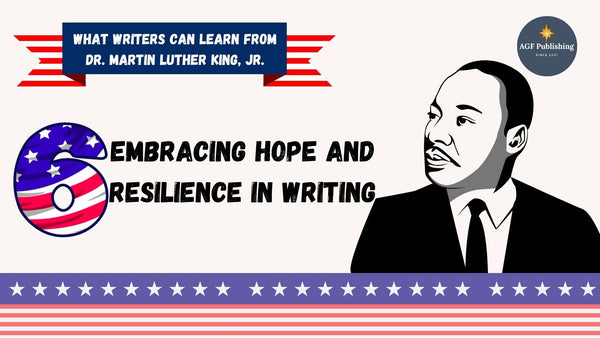
Embracing Hope and Resilience in Writing
Dr. Martin Luther King, Jr. stood as a beacon of hope during some of the darkest moments in American history. Even as he confronted injustice head-on, his words carried an unwavering belief in the possibility of a brighter future. His ability to weave hope into the fabric of his speeches and writings provided strength to millions and continues to inspire generations today.
For writers, King’s example highlights the importance of balancing difficult truths with the promise of redemption and renewal. Whether addressing personal struggles or societal issues, stories that reflect both hardship and hope create powerful, lasting connections with readers. Embracing hope and resilience in writing allows audiences to see the light even amidst adversity, fostering a sense of encouragement and empowerment.
Why Hope and Resilience Matter in Writing
Writing that acknowledges pain, loss, or injustice without offering a path forward can leave readers feeling disheartened. On the other hand, writing that focuses solely on positivity may feel disconnected from reality. Dr. King’s words struck a delicate balance—he never ignored the weight of oppression, yet he always pointed to the potential for justice and peace. This combination made his message not only credible but transformative.
Writers have the power to reflect the full spectrum of human experience. By addressing adversity and resilience side by side, we create stories that feel authentic and deeply moving. These narratives can inspire readers to persevere through their own challenges, fostering hope and reminding them that better days lie ahead.
Action Steps for Writers to Embrace Hope and Resilience:
-
Acknowledge the Hardship
King never glossed over the reality of racial injustice or the pain it caused. Instead, he acknowledged it head-on. Authentic writing begins with an honest portrayal of struggle, pain, or difficulty.
- Action Step: Don’t shy away from difficult subjects. Write about hardships truthfully and with empathy, ensuring that readers feel seen and understood.
-
Infuse Your Writing with Hope
While King addressed injustice, he always coupled his words with a forward-looking vision. Hope was woven into every message.
- Action Step: After addressing a challenge or hardship, pivot to a hopeful or redemptive element. Ask yourself: How can I reflect the possibility of healing or progress in this narrative?
-
Highlight Resilient Characters or Themes
King often drew on examples of those who persevered despite tremendous obstacles, reinforcing the idea that resilience can overcome adversity.
- Action Step: Create characters who demonstrate resilience or write about real-life figures who embody perseverance. Let their stories inspire your audience.
-
Use Symbolism to Represent Hope
King’s references to mountaintops, valleys, and flowing waters were symbolic representations of both struggle and triumph. Symbols add depth and convey hope subtly but powerfully.
- Action Step: Incorporate symbolic elements into your writing that reflect hope—light, bridges, growth, or rising landscapes. These symbols can add richness to your narrative.
-
End with a Call to Believe in Better
King’s speeches often concluded with a call to action grounded in hope and belief in a better tomorrow. Ending on an uplifting note leaves a lasting impression on readers.
- Action Step: Conclude your writing by reinforcing the idea that positive change is possible. Leave readers with a message that encourages them to move forward with hope and resilience.
-
Reflect on Your Own Journey
Much of King’s writing was informed by his personal experiences and the collective journey of those around him. Personal stories are powerful vehicles for conveying hope and resilience.
- Action Step: Reflect on your own moments of overcoming adversity. Use personal anecdotes to build authenticity and inspire readers with real-world examples of hope.
Putting It into Practice
Consider a project you’re currently working on. Where can you introduce hope or resilience to balance heavier themes? Whether it’s a novel, an essay, or a personal reflection, think about how your words can guide readers from darkness to light. By embracing hope and resilience, your writing can uplift, inspire, and encourage others to persevere—just as Dr. King’s words have done for decades.
Writing with hope doesn’t ignore reality; it transforms it. And in doing so, you contribute to the collective healing and growth of your readers, fostering a world where resilience and optimism lead the way forward.
#HopeInWriting #ResilientStories #MLKLessons #WritingWithPurpose #InspireThroughWriting #OvercomingAdversity #AuthenticNarratives #BalanceInWriting #ReflectHardship #SymbolismInWriting #EncourageReaders #StorytellingWithHope #TransformativeWriting #HealingThroughWords #EmpowerThroughWriting #PersonalReflections #PositiveChange #EmotionalConnection #WritingForImpact #RedemptiveWriting #CharactersOfResilience

